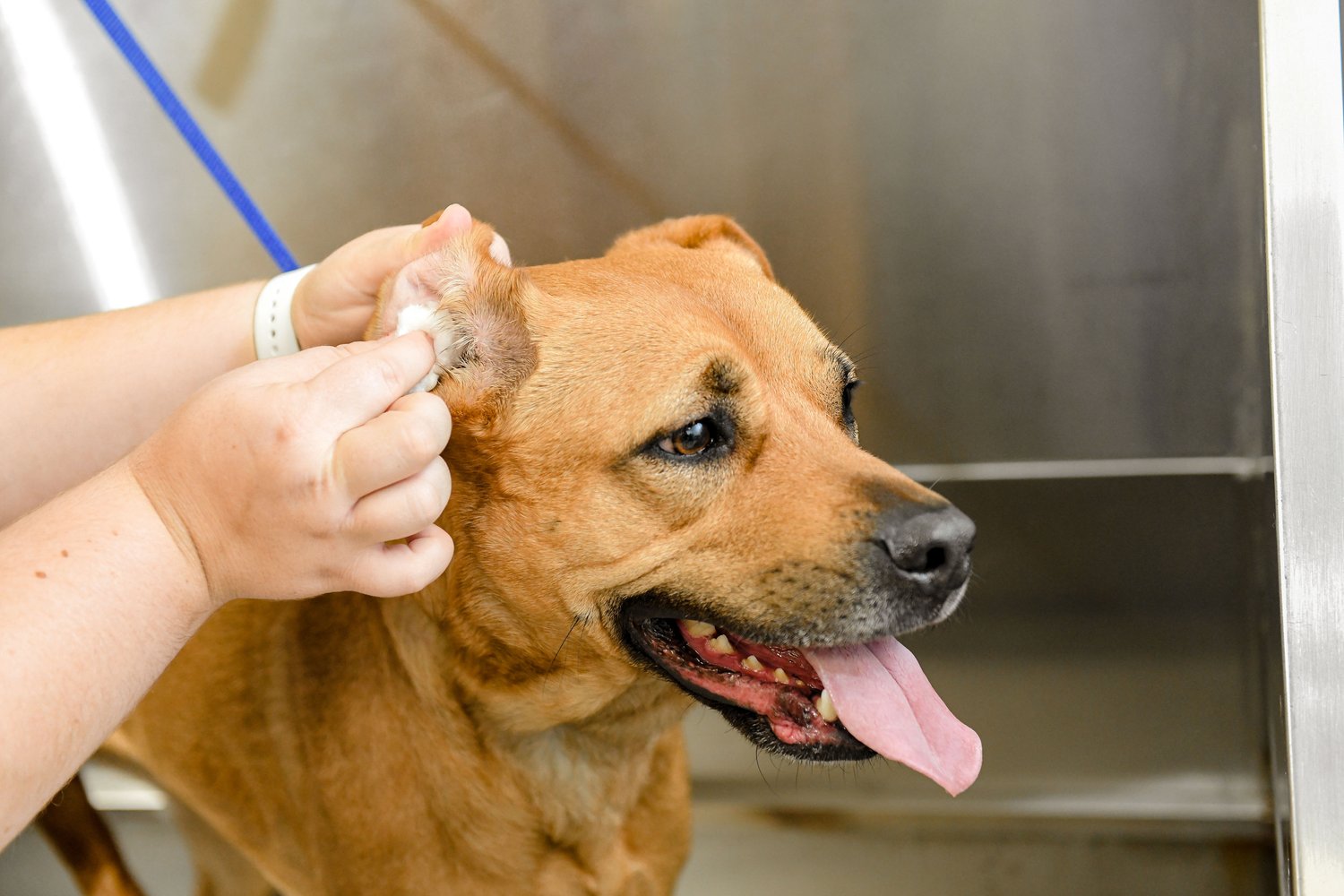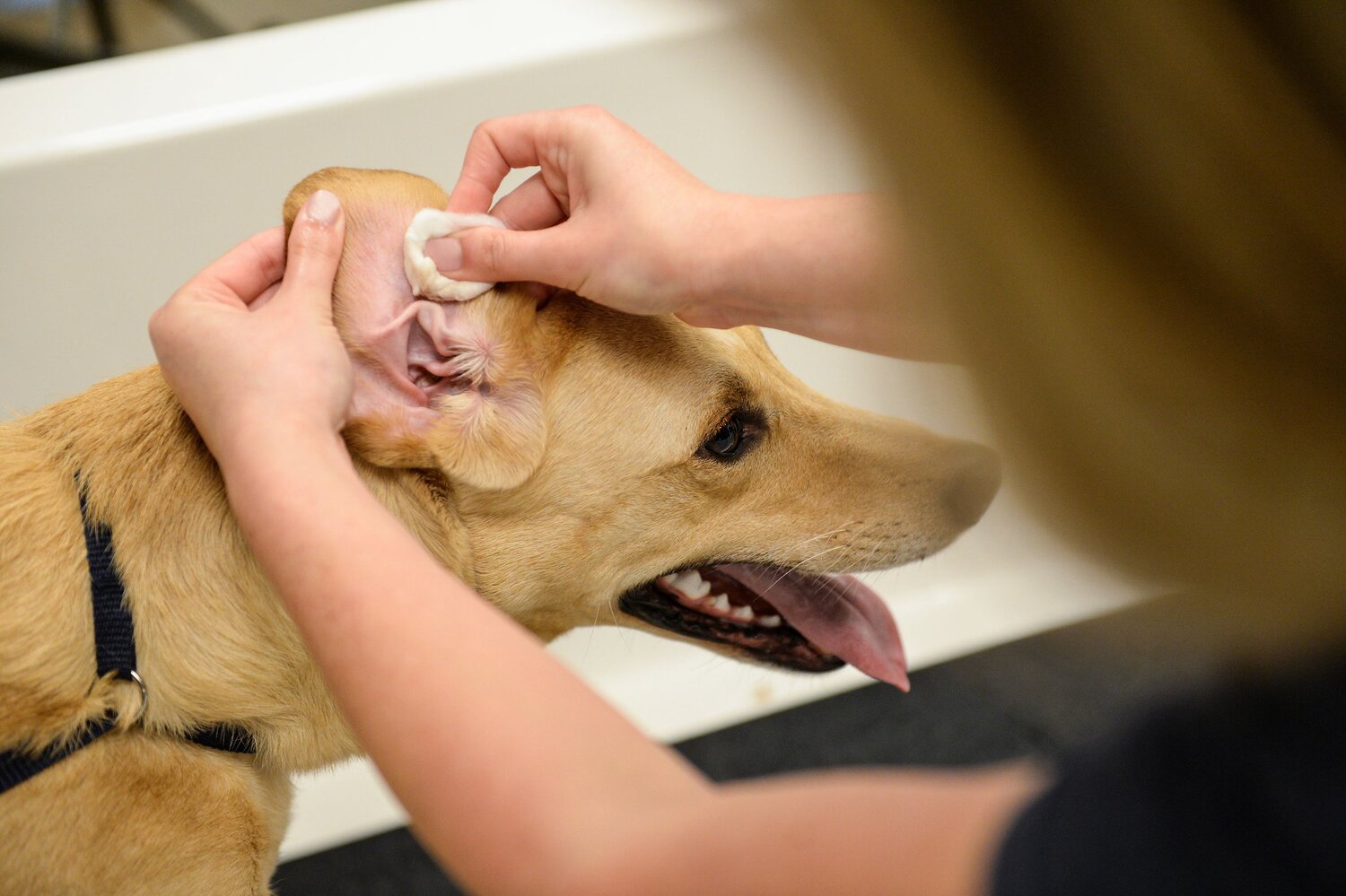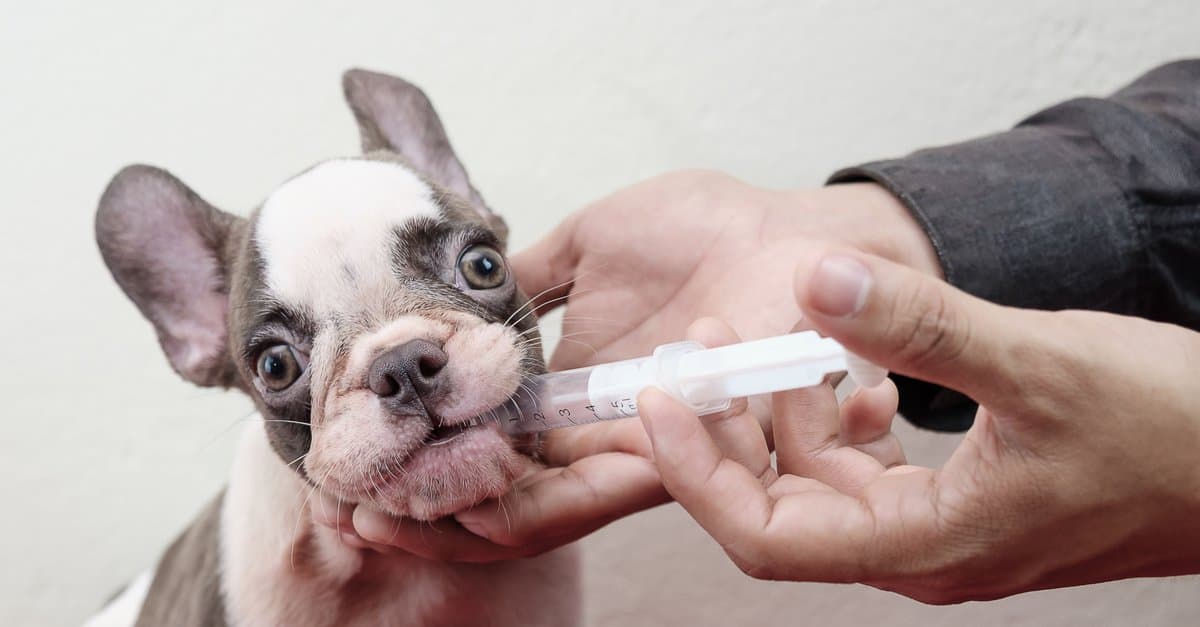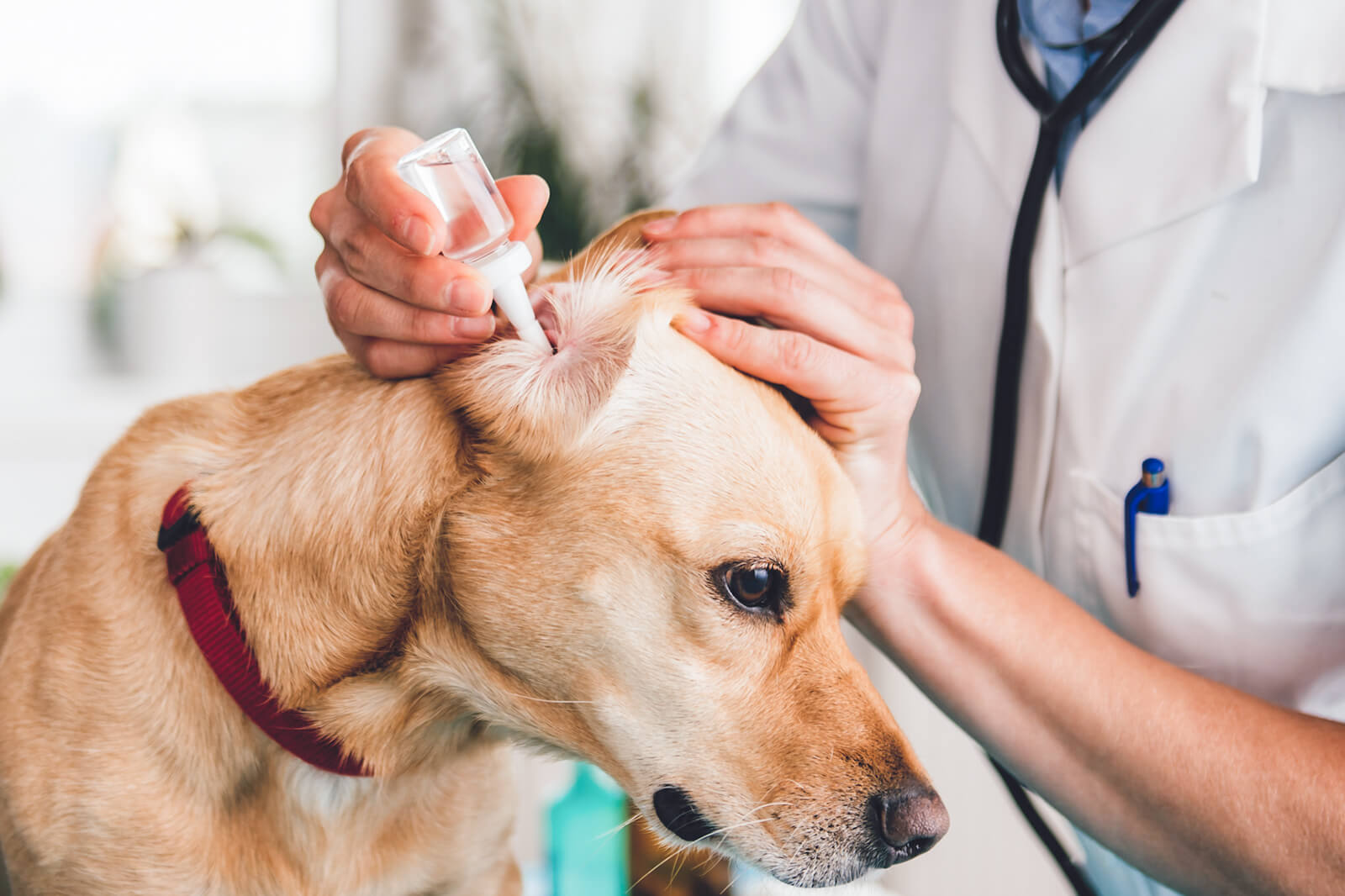Home>Health & Wellness>Common Health Issues>Eye and Ear Health>How To Treat Dog Ear Infection With Steroids
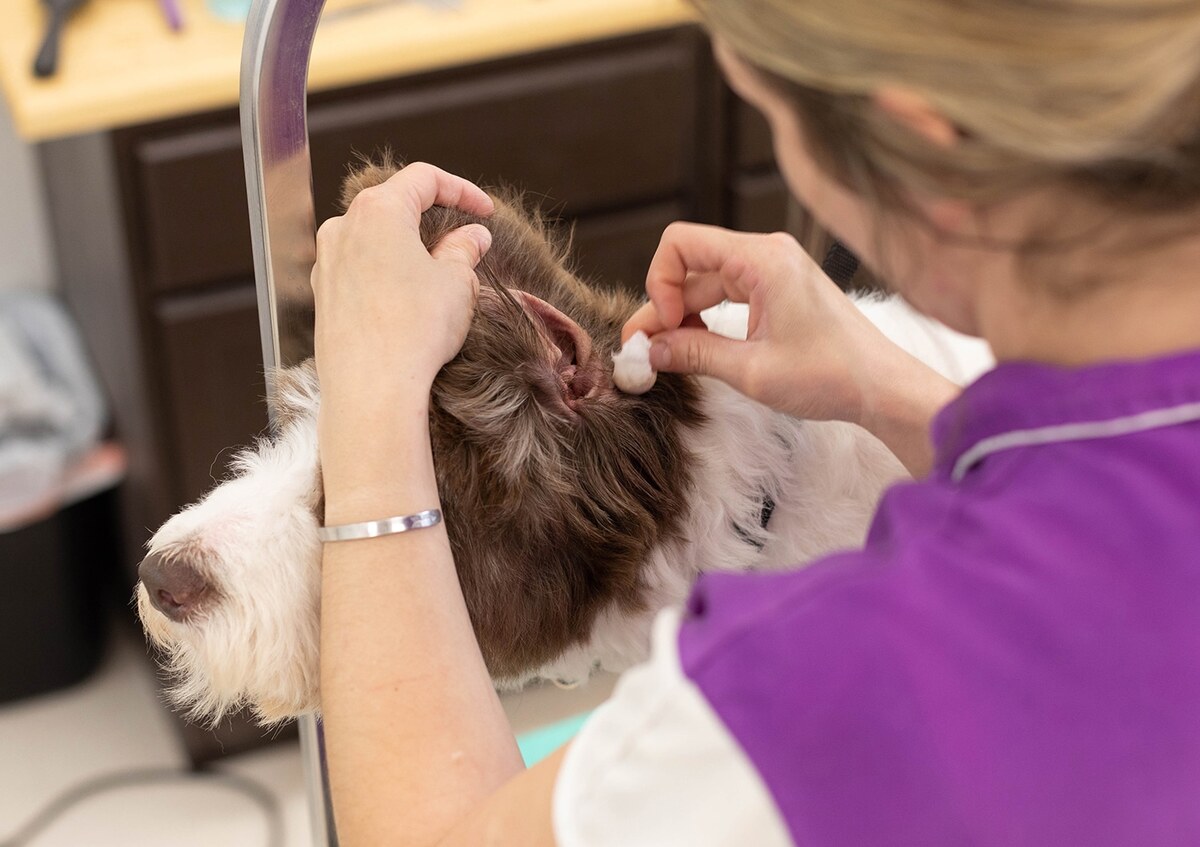

Eye and Ear Health
How To Treat Dog Ear Infection With Steroids
Modified: February 21, 2024
Learn how to effectively treat dog ear infections with steroids to improve your pet's eye and ear health. Discover expert tips and advice for managing your dog's ear health.
(Many of the links in this article redirect to a specific reviewed product. Your purchase of these products through affiliate links helps to generate commission for Pawsomeoldies.com, at no extra cost. Learn more)
Table of Contents
- Introduction
- Understanding Dog Ear Infections
- Role of Steroids in Treating Dog Ear Infections
- Types of Steroids Used for Dog Ear Infections
- Administration of Steroids for Dog Ear Infections
- Potential Side Effects of Steroid Treatment
- Monitoring and Follow-Up Care for Dog Ear Infections treated with Steroids
- Conclusion
Introduction
Dog ear infections are a common and often uncomfortable condition that can affect our canine companions. These infections can cause pain, itching, and discomfort for our furry friends, leading to distress and a decrease in their overall quality of life. As responsible pet owners, it's crucial to be aware of the various treatment options available to alleviate these symptoms and promote the well-being of our beloved pets.
In this comprehensive guide, we will delve into the use of steroids as a potential treatment for dog ear infections. Steroids, also known as corticosteroids, have been utilized in veterinary medicine to manage a wide range of inflammatory conditions, including ear infections in dogs. By understanding the role of steroids in treating dog ear infections, pet owners can make informed decisions about their furry companions' healthcare and well-being.
Throughout this article, we will explore the different types of steroids commonly used for treating dog ear infections, the administration of steroid treatment, potential side effects to be mindful of, and the importance of monitoring and follow-up care. By gaining insight into these crucial aspects, pet owners can equip themselves with the knowledge needed to support their dogs through the treatment process and facilitate a smooth recovery.
Join us as we embark on a journey to uncover the intricacies of using steroids to address dog ear infections, ultimately aiming to empower pet owners with the information necessary to make informed decisions about their canine companions' health and happiness.
Read more: What To Treat A Dog’s Ear Infection With
Understanding Dog Ear Infections
Dog ear infections, also known as otitis externa, refer to the inflammation of the external ear canal in dogs. This condition can be caused by various factors, including bacteria, yeast, allergies, foreign objects, excessive moisture, or hormonal imbalances. Understanding the underlying causes of dog ear infections is crucial for effective treatment and prevention.
Common symptoms of dog ear infections include ear scratching, head shaking, redness or swelling of the ear canal, unpleasant odor, discharge, and sensitivity to touch around the ears. Additionally, dogs may exhibit signs of discomfort, such as tilting their heads or rubbing their ears against furniture or the floor.
Certain dog breeds with floppy ears, such as Cocker Spaniels and Basset Hounds, are more prone to ear infections due to reduced air circulation within the ear canal. Furthermore, dogs that frequently swim or are exposed to humid environments may experience a higher incidence of ear infections due to moisture accumulation.
It's essential for pet owners to recognize the signs of ear infections in their dogs and seek prompt veterinary care. Delayed treatment can lead to complications and exacerbate the discomfort experienced by the affected dogs.
Upon examination, a veterinarian can determine the underlying cause of the ear infection through visual inspection, microscopic examination of ear discharge, and possibly, bacterial or fungal cultures. Understanding the specific cause of the infection is pivotal in devising an appropriate treatment plan.
In some cases, the use of steroids may be recommended as part of the treatment protocol for dog ear infections. Steroids can help alleviate inflammation and discomfort, providing relief for the affected dogs. However, it's important to note that the use of steroids should be carefully supervised by a veterinarian to ensure the safety and well-being of the canine patients.
By gaining a deeper understanding of the nature and causes of dog ear infections, pet owners can actively participate in the prevention and management of this common ailment. Through regular ear inspections, prompt veterinary attention, and adherence to preventive measures, such as ear cleaning and drying, pet owners can contribute to the overall ear health of their beloved canine companions.
Role of Steroids in Treating Dog Ear Infections
Steroids play a crucial role in the treatment of dog ear infections by effectively addressing the inflammatory component of the condition. When a dog experiences an ear infection, the body's natural response is to initiate an inflammatory process to combat the underlying cause, whether it be bacteria, yeast, or allergies. This inflammatory response can lead to swelling, redness, pain, and discomfort in the affected ear canal. Here, steroids, also known as corticosteroids, come into play as potent anti-inflammatory agents.
By administering steroids, veterinarians aim to reduce the inflammation within the dog's ear canal, thereby alleviating the associated discomfort and promoting the healing process. The anti-inflammatory properties of steroids help to mitigate the swelling and redness, providing relief for the affected dog. This, in turn, can contribute to a significant improvement in the dog's overall well-being and comfort.
Moreover, steroids can aid in minimizing the excessive production of earwax and discharge, which are common symptoms of ear infections. By addressing these symptoms, steroids can help restore a healthier ear environment for the dog, facilitating the resolution of the infection.
It's important to note that while steroids effectively target the inflammatory aspect of dog ear infections, they do not directly combat the underlying cause, such as bacteria or yeast. Therefore, steroids are often used in conjunction with other treatments, such as antimicrobial medications, to comprehensively address the infection.
The use of steroids in treating dog ear infections underscores the significance of a multifaceted approach to veterinary care. By combining the anti-inflammatory properties of steroids with targeted treatments for the specific causative agents, veterinarians can optimize the management of ear infections in dogs, ultimately aiming to restore the ear health and comfort of their patients.
In the next sections, we will delve into the specific types of steroids commonly used for treating dog ear infections, the administration of steroid treatment, potential side effects to be mindful of, and the importance of monitoring and follow-up care. Through a comprehensive understanding of these aspects, pet owners can actively participate in supporting their dogs through the treatment process, contributing to their overall well-being and happiness.
Types of Steroids Used for Dog Ear Infections
When it comes to treating dog ear infections, veterinarians may utilize specific types of steroids to address the inflammatory component of the condition. One of the most commonly employed steroids in veterinary medicine is hydrocortisone. Hydrocortisone is a mild corticosteroid that exhibits potent anti-inflammatory properties, making it well-suited for managing the inflammation associated with ear infections in dogs. Its effectiveness in reducing swelling and alleviating discomfort within the ear canal contributes to the overall improvement of the dog's condition.
Another commonly used steroid for dog ear infections is dexamethasone. Dexamethasone belongs to the class of potent corticosteroids and is renowned for its robust anti-inflammatory effects. This steroid is often preferred in cases where a more aggressive approach to inflammation management is required. By swiftly mitigating the inflammatory response within the ear canal, dexamethasone aids in providing rapid relief for the affected dog, thereby enhancing their comfort and well-being.
Furthermore, veterinarians may opt for the use of prednisolone in treating dog ear infections. Prednisolone, a synthetic corticosteroid, exhibits strong anti-inflammatory properties and is well-suited for addressing the inflammation and discomfort associated with ear infections. Its efficacy in reducing swelling and redness within the ear canal contributes to the alleviation of the dog's symptoms, fostering a conducive environment for the resolution of the infection.
It's important to highlight that the selection of a specific steroid for treating dog ear infections is contingent upon various factors, including the severity of the inflammation, the individual dog's medical history, and any concurrent health conditions. Veterinarians exercise their expertise in determining the most appropriate steroid and dosage regimen tailored to the unique needs of each canine patient.
By leveraging the anti-inflammatory properties of these steroids, veterinarians can effectively target the underlying inflammation in the ear canal, thereby contributing to the comprehensive management of dog ear infections. The judicious use of these steroids, in conjunction with other treatment modalities, underscores the commitment to promoting the ear health and well-being of our canine companions.
In the subsequent sections, we will delve into the administration of steroid treatment for dog ear infections, potential side effects to be mindful of, and the importance of monitoring and follow-up care. Through a comprehensive understanding of these aspects, pet owners can actively participate in supporting their dogs through the treatment process, ultimately contributing to their overall well-being and happiness.
Administration of Steroids for Dog Ear Infections
The administration of steroids for dog ear infections is a critical aspect of the treatment process, necessitating careful attention to dosage, application methods, and duration of treatment. Veterinarians play a pivotal role in devising a tailored steroid regimen to address the specific inflammatory component of the ear infection while ensuring the safety and well-being of the canine patient.
Steroids for dog ear infections are commonly available in various formulations, including ear drops, ointments, and oral medications. The selection of the most suitable formulation is contingent upon factors such as the severity of the inflammation, the dog's individual characteristics, and the veterinarian's assessment of the most effective delivery method.
In cases where the ear infection is localized and the inflammation is primarily confined to the ear canal, veterinarians may opt for the use of steroid ear drops or ointments. These formulations allow for targeted application directly into the affected ear, facilitating the delivery of the steroid to the site of inflammation. The localized administration of ear drops or ointments enables the effective mitigation of swelling and discomfort within the ear canal, thereby promoting relief for the affected dog.
Alternatively, in instances where the ear infection is accompanied by systemic inflammation or the involvement of both ears, veterinarians may consider the use of oral steroid medications. Oral steroids offer the advantage of systemic distribution throughout the body, exerting anti-inflammatory effects beyond the localized ear canal. This comprehensive approach to inflammation management can be particularly beneficial in cases where the infection extends beyond the external ear, necessitating a broader therapeutic reach.
The dosage and duration of steroid treatment are meticulously determined by the attending veterinarian, taking into account the specific needs and response of the canine patient. It is imperative for pet owners to adhere to the prescribed dosage and administration schedule, ensuring the consistent and effective delivery of the steroid treatment.
Throughout the administration of steroids for dog ear infections, close communication between pet owners and veterinarians is essential. Pet owners should diligently follow the veterinarian's instructions regarding the application of ear drops, ointments, or oral medications, while also monitoring the dog for any signs of improvement or potential side effects.
By actively participating in the administration of steroid treatment, pet owners can contribute to the successful management of their dog's ear infection, ultimately fostering a conducive environment for the resolution of the condition. The judicious administration of steroids, in conjunction with other treatment modalities, underscores the commitment to promoting the ear health and well-being of our canine companions.
Read more: How To Prevent Ear Infections In Dogs
Potential Side Effects of Steroid Treatment
While steroids serve as valuable tools in managing the inflammatory component of dog ear infections, it is essential to be mindful of potential side effects associated with their use. Understanding these side effects empowers pet owners to actively monitor their canine companions and promptly seek veterinary guidance if any concerning symptoms arise.
One of the primary side effects of steroid treatment in dogs is the potential for gastrointestinal disturbances. Oral steroid medications can occasionally lead to digestive issues such as vomiting, diarrhea, or reduced appetite. These symptoms may indicate an adverse reaction to the steroid treatment and should be promptly reported to the veterinarian for further evaluation.
Additionally, the prolonged or excessive use of steroids in dogs can predispose them to systemic effects, including increased thirst and urination. This is attributed to the impact of steroids on the body's fluid balance and kidney function. Pet owners should be vigilant for any notable changes in their dog's drinking and urination patterns, as excessive thirst and urination could signify an adverse reaction to the steroid treatment.
Furthermore, the immune-suppressing properties of steroids can render dogs more susceptible to infections. Prolonged steroid use may compromise the immune system's ability to combat pathogens effectively, potentially leading to an increased risk of bacterial or fungal infections. Pet owners should remain attentive to any signs of recurrent or persistent infections in their dogs, as these may warrant veterinary assessment and potential adjustments to the treatment plan.
Another noteworthy side effect of steroid treatment is the potential for adrenal suppression. Prolonged or high-dose steroid administration can impact the function of the adrenal glands, which play a crucial role in regulating various bodily processes. Adrenal suppression can manifest as lethargy, weakness, or changes in the dog's overall demeanor. Pet owners should promptly communicate any concerning behavioral or physical changes to their veterinarian for further evaluation.
It is important to emphasize that while potential side effects exist, the judicious use of steroids under veterinary supervision significantly mitigates the risk of adverse reactions. Veterinarians carefully assess the individual dog's medical history, current health status, and the specific requirements of the ear infection to tailor an appropriate steroid regimen.
By remaining vigilant and proactive in monitoring their dogs for potential side effects, pet owners play a pivotal role in safeguarding their canine companions' well-being throughout the course of steroid treatment. Open communication with the veterinarian and a keen awareness of any changes in the dog's behavior or physical condition are instrumental in ensuring a safe and effective treatment experience.
Through a comprehensive understanding of the potential side effects of steroid treatment, pet owners can actively contribute to the overall care and welfare of their beloved canine companions, fostering a supportive and nurturing environment for their recovery from ear infections.
Monitoring and Follow-Up Care for Dog Ear Infections treated with Steroids
Following the initiation of steroid treatment for dog ear infections, diligent monitoring and follow-up care are essential components of ensuring the well-being and recovery of the affected canine patients. Pet owners play a pivotal role in observing their dogs for any changes in symptoms, behaviors, or potential side effects, thereby facilitating timely intervention and support.
Regular monitoring of the dog's ear condition is paramount in gauging the response to steroid treatment. Pet owners should observe the affected ear for improvements in redness, swelling, discharge, and odor. A reduction in these symptoms signifies a positive response to the steroid treatment, indicating progress in resolving the ear infection. Conversely, the persistence or exacerbation of these symptoms warrants prompt veterinary attention to reassess the treatment plan and address any underlying concerns.
In addition to visual observations, pet owners should be attentive to their dog's behavior and comfort level. Signs of discomfort, such as increased ear scratching, head shaking, or sensitivity to touch around the ears, may indicate inadequate response to the steroid treatment or the emergence of potential side effects. By promptly recognizing and reporting these behavioral cues to the veterinarian, pet owners contribute to the proactive management of their dog's ear infection.
Furthermore, adherence to scheduled follow-up appointments with the veterinarian is crucial for assessing the progress of the ear infection and the dog's response to steroid treatment. During these follow-up visits, veterinarians conduct thorough examinations of the affected ear, evaluate the dog's overall well-being, and may perform additional diagnostic tests if necessary. These assessments enable veterinarians to make informed decisions regarding the continuation, modification, or cessation of steroid treatment, ensuring that the dog receives the most appropriate care tailored to their evolving needs.
Open communication between pet owners and veterinarians is fundamental in the monitoring and follow-up care process. Pet owners should actively engage in discussions with their veterinarians, providing detailed updates on the dog's response to steroid treatment, any observed changes in symptoms or behaviors, and any concerns or questions that may arise. This collaborative approach fosters a comprehensive understanding of the dog's progress and enables veterinarians to make informed adjustments to the treatment plan as needed.
By actively participating in the monitoring and follow-up care for dog ear infections treated with steroids, pet owners contribute to the holistic well-being and recovery of their beloved canine companions. Through attentive observation, proactive communication with veterinarians, and a commitment to scheduled follow-up appointments, pet owners play a vital role in supporting their dogs through the treatment process, ultimately fostering a conducive environment for the resolution of ear infections and the restoration of their dogs' ear health and comfort.
Conclusion
In conclusion, the treatment of dog ear infections with steroids represents a multifaceted approach aimed at addressing the inflammatory component of this common canine ailment. By harnessing the potent anti-inflammatory properties of steroids, veterinarians can effectively mitigate the swelling, redness, and discomfort within the ear canal, ultimately contributing to the alleviation of symptoms and the promotion of the affected dog's well-being.
Throughout this comprehensive guide, we have delved into the intricate facets of using steroids to treat dog ear infections, encompassing the understanding of ear infections in dogs, the role of steroids in managing inflammation, the types of steroids commonly employed, the administration of steroid treatment, potential side effects, and the importance of monitoring and follow-up care.
It is crucial for pet owners to recognize the signs of ear infections in their dogs and seek prompt veterinary care. The judicious use of steroids, under the supervision of a veterinarian, underscores the commitment to promoting the ear health and well-being of our canine companions. By actively participating in the prevention, management, and recovery from ear infections, pet owners play a pivotal role in safeguarding the overall ear health and comfort of their beloved dogs.
As responsible pet owners, it is imperative to remain vigilant and proactive in monitoring our dogs for potential changes in symptoms, behaviors, or side effects during the course of steroid treatment. Open communication with veterinarians, adherence to prescribed treatment regimens, and commitment to scheduled follow-up appointments are instrumental in ensuring a safe and effective treatment experience for our canine companions.
By gaining a deeper understanding of the treatment of dog ear infections with steroids, pet owners are empowered to make informed decisions about their dogs' healthcare, actively contributing to their overall well-being and happiness. Through a collaborative approach between pet owners and veterinarians, we can create a supportive and nurturing environment for the recovery from ear infections, ultimately fostering the restoration of our dogs' ear health and comfort.
In essence, the use of steroids in treating dog ear infections underscores the dedication to providing comprehensive care for our beloved canine companions, aiming to alleviate their discomfort, promote their well-being, and enhance their quality of life.








